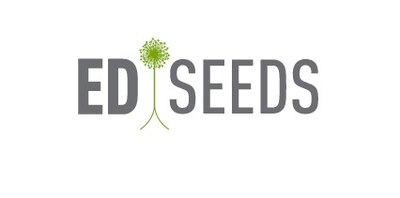Alexander Ooms says Colorado is finally following the lead of other states and embracing a start-up mentality as it tackles education reform.

On the surface, Colorado has all the right ingredients for K-12 innovation: a fertile ecosystem of talented educators, an engaged philanthropic community, supportive legislation and policy and the open and collaborative culture of the West. However these promising ingredients have yielded little of substance. Why is this so?
Back in 2008, the Colorado legislature passed the Innovation Schools Act. At the time, there was great optimism that the energy of education reform combined with the ability to remove various constraints would produce a wave of innovative new approaches. Five years on, and it has not been so: the act itself is notable mainly for its unfulfilled promise, and the schools that came into being under the act have shown little to no change. A formal evaluation from November of 2011 summed it up thus:
…interviews at the seven Innovation schools suggested that at least on the surface, the majority of these schools had not made significant departures from their practice prior […] To a large extent, Innovation schools are very similar to DPS schools in terms of the curricula they use, their calendars, and their instructional time.
What went wrong? I believe that, in large part, Colorado’s innovation has been focused on the wrong scale, initiated by the wrong people and pursued at the wrong time:
- Currently, the focus of innovation has usually been entire schools. But new schools take several years to start, are difficult to change quickly and the complex problems inherent in a large system can be a stifling environment for innovation to thrive. Instead, innovation is best fostered at the classroom level, and should start by solving specific and discrete problems.
- Too many innovation attempts are pushed from the top down instead of growing from the bottom up. Innovation is most likely to originate from teachers. Teachers – not the legislators, administrators and policy wonks who usually try to dictate change – know classroom challenges firsthand. Teachers are closest to students, best able to formulate and test ideas and most likely to observe real change.
- The traditional school day is not a fertile ground for innovation. Most schools have a low tolerance for trying new things and many teachers work within a number of constraints: a set routine and curricula, a linear series of goals and metrics and 25 or more kids at once. New ideas are more likely to flourish if initially tried in smaller groups outside the traditional school setting – summer programs, after school or during weekends.
These are not particularly novel ideas. The concept of design thinking and the emergence of places like Stanford’s d.school, combined with the lean startup movement have been redefining the idea of innovation in other industries for some time. The ability to develop new products – and sometimes new companies – in a matter of weeks has taken root within technology accelerators, such as Boulder’s TechStars or Silicon Valley’s Y Combinator.
Education is just now beginning to notice. In several pockets across the country, such as 4.0 schools in New Orleans, the K12 Lab in Palo Alto, Socratic Labs in NYC or the national effort of Startup Weekend Education, these and similar ideas are taking root.
Long thought of as an education pioneer, Colorado has been late to this effort. But that is beginning to change. An EdTech Meetup group is increasingly active. Last year, a program called DesignEDU convened educators and other professionals from across the state to engage in a series of design programs over two days. This spring, I’ve been involved with the introduction of EdSeeds, a program initiated at the Donnell-Kay Foundation in partnership with the Colorado Education Association that works with small teams of educators on specific classroom challenges. (Hopefully other organizations will post about their programs in the comments below).
I am more discouraged about the prospects for traditional district reform than at any time over the previous decade. But the constellation of the small but intense lights of these growing innovation efforts make me more hopeful about real and substantive change in education than I have ever been. Most innovation is a slow and unsteady process – the first modern airplane flight went all of 120 feet and only came after various experiments with printing presses, bicycles and motors. There will be many false starts along the way. But we have started the journey, and probably the best thing about it is that we don’t know where it will take us.
About our First Person series:
First Person is where Chalkbeat features personal essays by educators, students, parents, and others trying to improve public education. Read our submission guidelines here.
